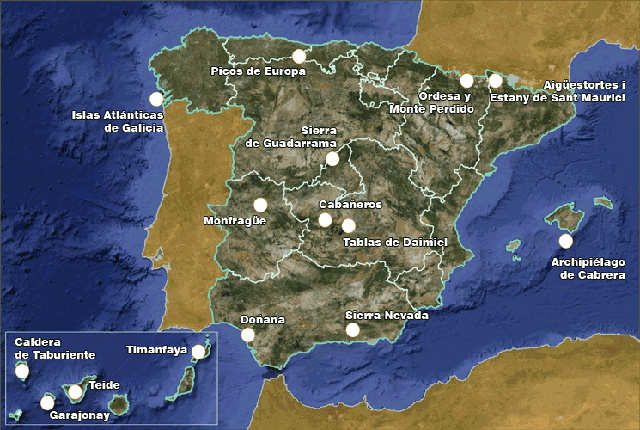 |
| Dreissena polymorpha |
Invasive alien species (IAS) are a leading cause of biodiversity loss
in Europe and across the globe. As plants or animals that are
introduced, either accidentally or deliberately, into areas they would
not otherwise have reached, IAS can cause substantial ecological damage,
disrupting native ecosystems. This can lead to extinctions, loss of
important ecosystem services and harm to human health. They can also
result in significant economic losses; estimates indicate that IAS
damage and control measures currently cost Europe at least €12 billion
per year. In recognition of the serious and urgent nature of this
threat, the EU Biodiversity Strategy to 2020
1 sets specific
targets to tackle IAS. The strategy also includes the development of a
dedicated legislative instrument focusing on early warning, rapid
response and damage control, which was adopted on the 9
th of September this year.
This Thematic Issue from Science for Environment Policy presents key
pieces of research exploring risk assessments of IAS, surveillance
methods, management practices and public perceptions of the problem.
The first article in this issue asks
‘What are the impacts of invasive alien species?’,
presenting a study which reveals that beyond the immediate effects of
IAS, more subtle changes can occur that affect an entire ecosystem. In
the UK, for example, the predatory flatworm not only reduces numbers of
native earthworms, but also increases waterlogging; in the absence of
earthworms, the soil becomes less porous. This in turn affects
conditions for plants and makes the habitat less suitable for moles.
These diverse impacts must be carefully considered in risk assessments
and management of IAS, the study’s authors note.
Risk assessments are a particularly important aspect of IAS research,
as they can help set priorities and support effective surveillance and
rapid response. Limited resources mean it is not possible to control
every species that is alien to Europe, therefore risk assessments are
needed which help us identify the species that are most likely to have
ecological and economic impacts.
‘A new approach for evaluating alien species risk’
sets out a framework for best practice, defining risk in relation to
transport (which includes introduction), establishment, abundance,
spread, and impact. This, say the researchers, aids understanding of how
invasion processes are linked and promotes a more effective,
integrative approach to IAS risk assessments. The article
‘Socio-economic factors affect risk of alien species invasion’
examines the best ways of predicting locations most at risk from
invasion by alien aquatic species. The study summarised in this article
shows that basing risk assessments on environmental factors, such as
temperature, and omitting socio-economic factors, such as distance to
the nearest port, could result in serious underestimations of the areas
at risk.
The importance of human influence is also highlighted by the article
‘Human population density explains alien species richness in protected areas’.
This study shows that across the wide range of different habitats
encompassed by South African national parks, local human population is
the only characteristic that consistently reflects IAS abundance.
Risks of invasion can change over time, as the article
‘Mapping fish invasions in European freshwaters’
illustrates. Documenting pathways of fish invasion into Germany and
Austria, the researchers demonstrated that although, in the past, the
main driver of introductions has been commercial fisheries, the species
currently showing the most rapid expansions have been introduced via
trade in animals. The changing nature of IAS risk as a result of climate
change is the focus of the article
‘Endangered species' response to the dual threat of climate change and invasive species’, which predicts that the invasive zebra mussel may benefit from climate change, negatively affecting native mussel populations.
Beyond the impacts and risks of IAS, this issue also explores how
best to guard against future introductions and prevent the spread of
newly introduced species. Good surveillance is particularly important
and the article
‘Effective tools to predict spread and improve monitoring of invasive alien species’
considers how habitat suitability models can provide information for
targeted sampling, providing much higher detection rates than random
sampling.
Effective prevention can be achieved, however, as the article
‘Risks of invasion of alien marine species driven by global shipping’
illustrates. This study examined the risks of invasion of marine
species spread by transportation in ballast water, and shows that
treating this water before it is discarded could reduce the risk by as
much as 82%.
One key factor influencing the success of management and eradication
of IAS are the perceptions of different stakeholders, from the public to
conservation managers and scientists.
‘Does the public’s view of invasive alien species differ from the professionals’?’
explores differing attitudes to IAS, and indicates that the general
public feel that human responsibility for introduction is a key factor
in whether to eradicate species, often not explicitly discussed by
scientists. The study’s authors call for better communication, stressing
that open discussion between scientists and the public could lead to a
valuable increase in understanding of IAS.
The importance of an in-depth understanding of the risks of IAS is also highlighted in our last article,
‘Conservation managers and public unaware of invasive alien species’
true risks’, detailing a UK survey which finds, worryingly, that
regardless of the amount of scientific research on a species, both the
public and conservation managers are unaware of the full risks posed by
IAS.
In conclusion, IAS present a severe threat to global biodiversity. To
meet this challenge, prevention of new introductions, early warning of
invasions and rapid response to such threats must be guiding principles.
An effective system of prioritisation is also needed, to focus limited
resources on key threats. Furthermore, good communication between
scientists, the public and conservation managers would increase the
chances of success in vital prevention, eradication and management
efforts.
- http://ec.europa.eu/environment/nature/biodiversity/comm2006/2020.htm
Dr. Piero Genovesi
Chair, IUCN SSC Invasive Species Specialist Group
Senior Scientist, Institute for Environmental Protection and Research
















